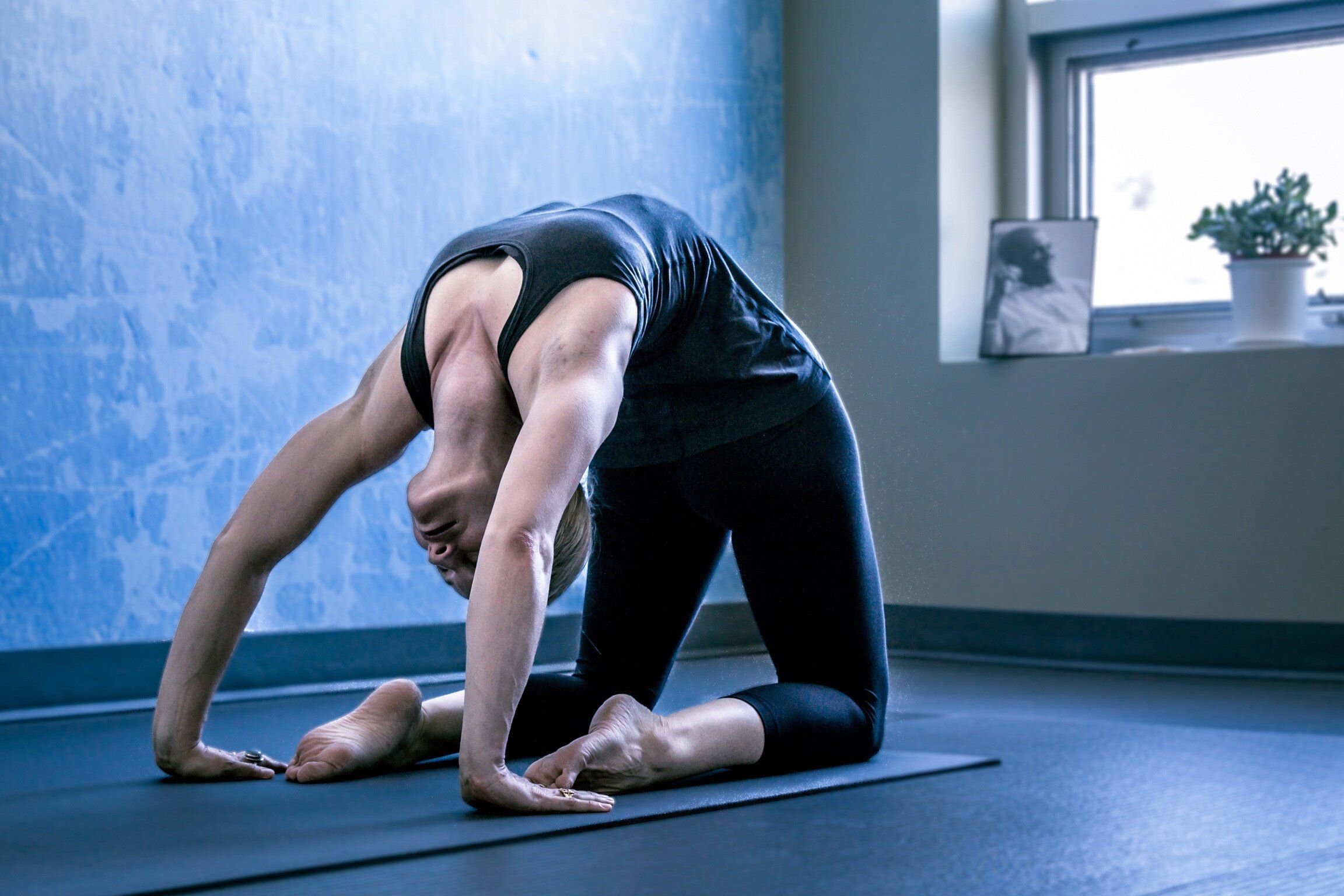
YOGA
“If you gaze long into an abyss, the abyss will also gaze into you.”
Enjoy These Musings and Insights on Yoga and Life

Ways To Make An Easy Exit
Last week I gave some tips and exercises to help you find stability in the Second Series posture, pinchamayurasana. This week I have some tips for getting out of it!
The “peacock feather pose” can be a challenging forearm stand all on its own, without having to exit it by jumping and landing in chaturanga dandasana also known as the "four limb staff pose." In Mysore, India, this posture is taught with a very specific exit that must also be mastered before the student will be able to move on to the next pose, karandavasana, which shares this same exit!

How To Make A "Peacock Feather"
Pinchamayurasana translates as the “Peacock Feather Pose.” This is a challenging Intermediate Series asana that many students struggle with, especially the naturally flexible ones, as it requires a degree of stiffness and strength in the arms, shoulders, and deep in the core muscles…
One identifying feature of Lord Krishna is the peacock feather in his crown. In India the feather of a peacock is a symbol of good luck, prosperity, beauty, and wisdom. It is a protection against evil and is thought to destroy all poisonous emotions like anger, greed, and jealousy…

What's stopping your Bakasana B?
Bakasana B can be an intimidating prospect when working through the Second Series of the Ashtanga yoga sequence. Many times students say, “but I can’t jump and land!” So, what exactly is stopping you from successfully landing on the backs of your arms in this position?

Tips for Working on Kapotasana
Kapotasana is another one of those very difficult postures in the Second Series of the Ashtanga yoga sequence. Here you will find some tips for working on this asana using the assistance of a wall to gradually open and strengthen the muscles supporting the spine so that you can practice this posture without pain.
